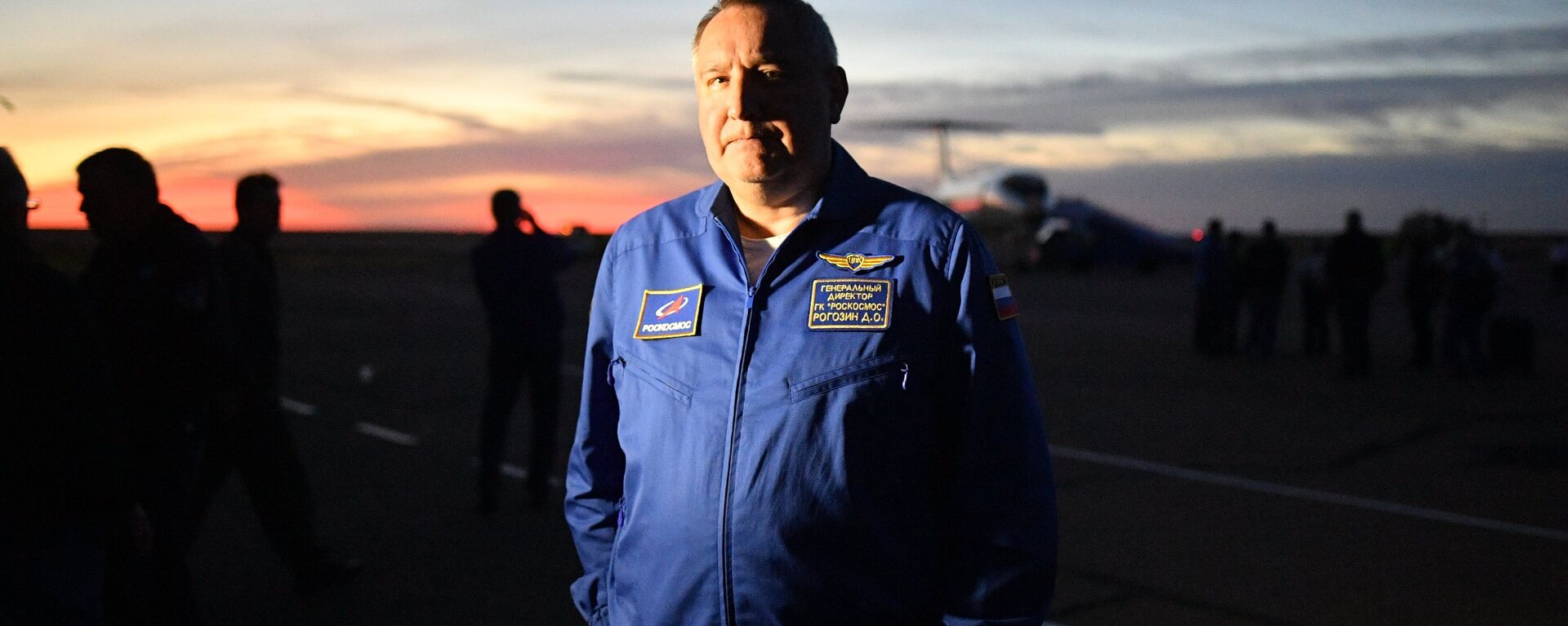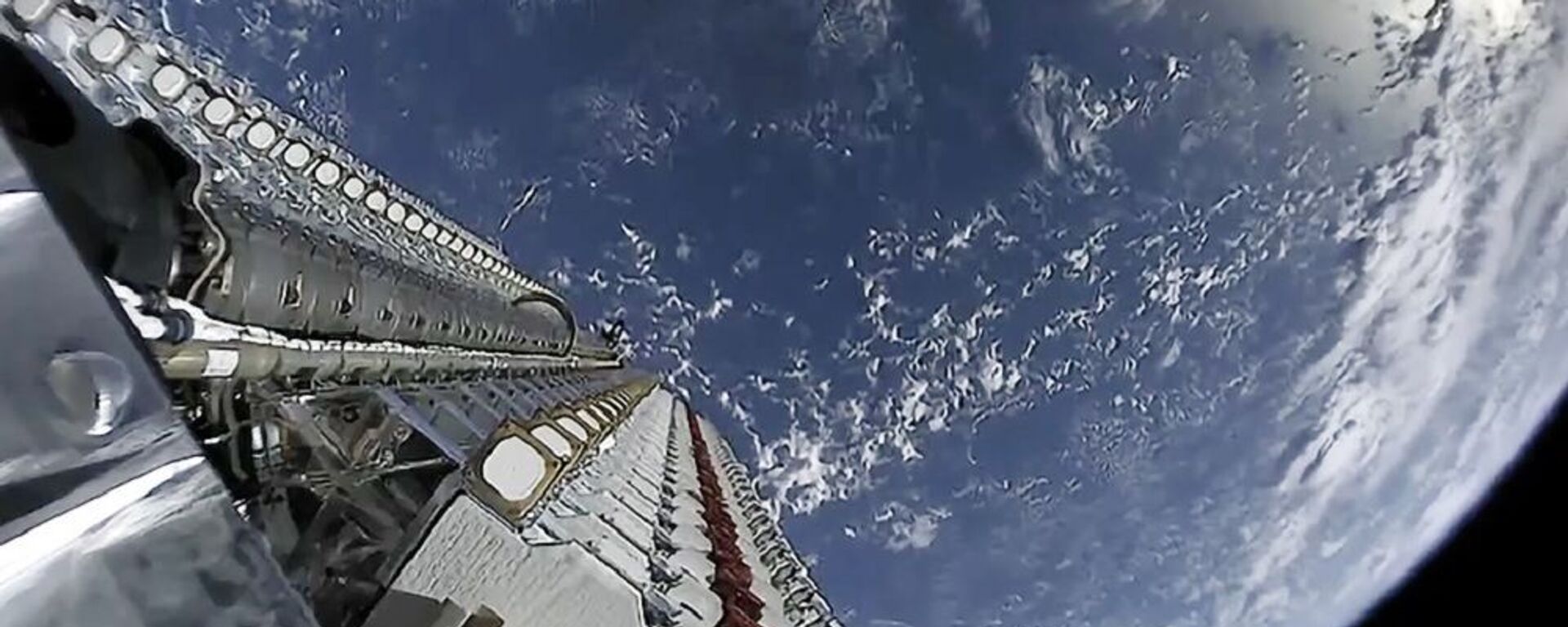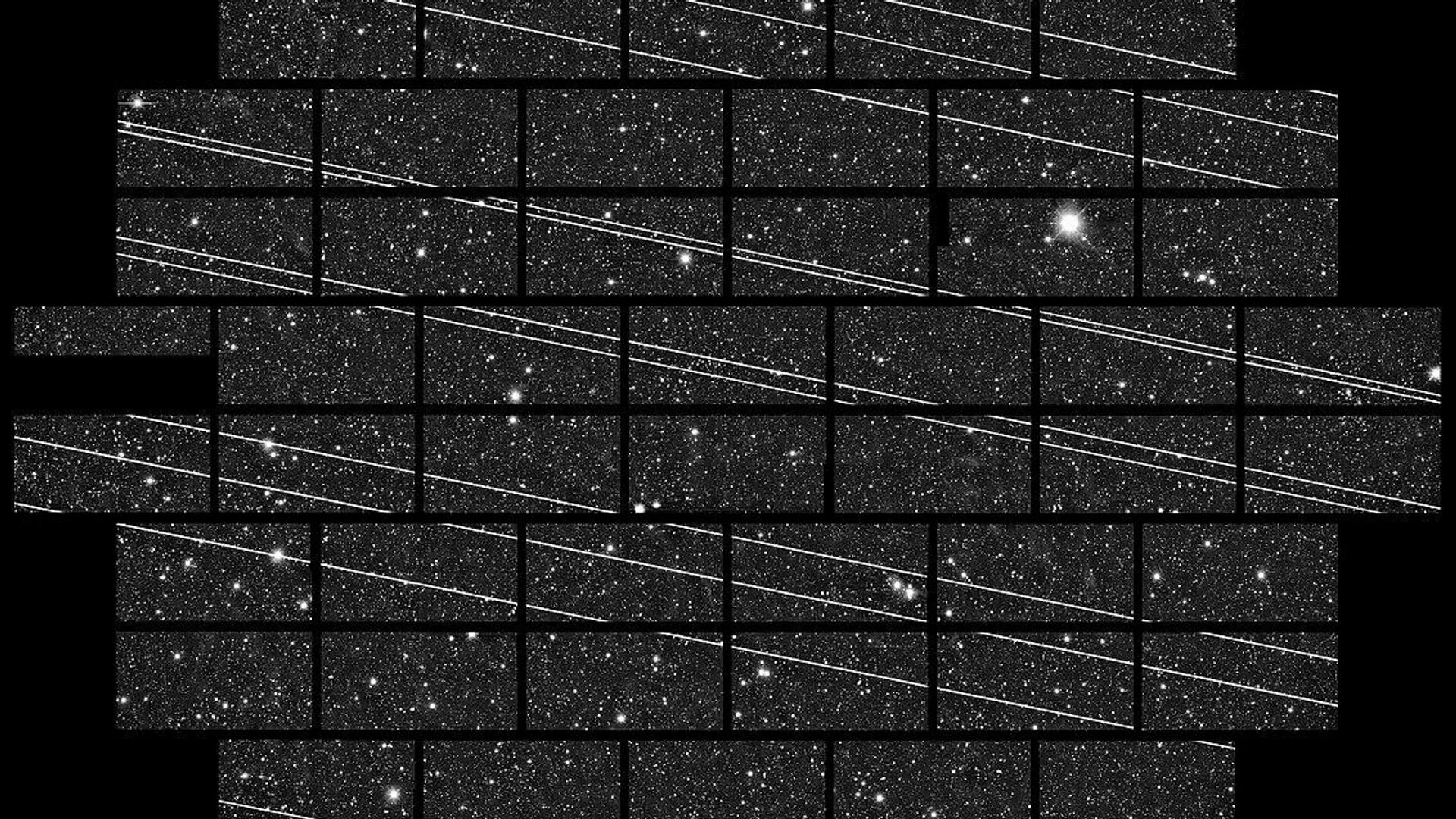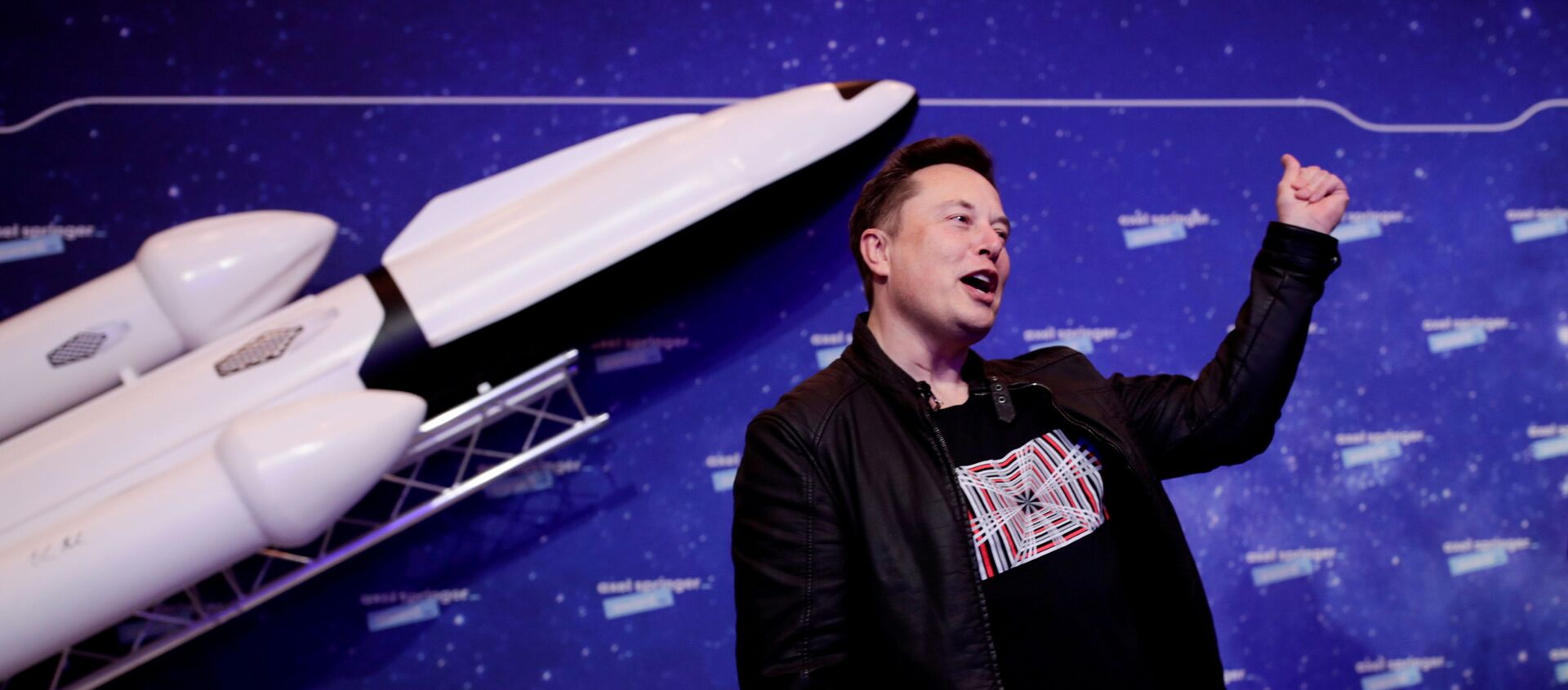https://sputnikglobe.com/20211008/russias-space-chief-warns-musks-starlink-satellites-could-hijack-cruise-missiles-mid-flight-1089765311.html
Russia’s Space Chief Warns Musk’s Starlink Satellites Could Hijack Cruise Missiles Mid-Flight
Russia’s Space Chief Warns Musk’s Starlink Satellites Could Hijack Cruise Missiles Mid-Flight
Sputnik International
SpaceX touts Starlink as a next-gen satellite network capable of providing broadband internet access. The private space company has launched nearly 1,800... 08.10.2021, Sputnik International
2021-10-08T10:45+0000
2021-10-08T10:45+0000
2021-10-08T10:51+0000
dmitry rogozin
elon musk
roscosmos
spacex
https://cdn1.img.sputnikglobe.com/img/07e5/0a/08/1089764113_0:194:1132:831_1920x0_80_0_0_3dee5625078d6bf162ede359e093dfec.jpg
SpaceX’s Starlink internet satellites may be used to change the trajectories of cruise missiles in mid-flight, or assist special forces and spy networks, Roscosmos Director Dmitry Rogozin has warned.Speaking to Russia’s Channel One, Rogozin, who has had a long-running, meme-fuelled, mostly good-natured feud with SpaceX CEO Elon Musk, indicated the US government has provided SpaceX about $900 million dollars for Starlink, with total subsidies in the next budget expected to reach about $20 billion.Rogozin added that Starlink could deliver internet “with purely political and, most likely, anti-Russian content,” thereby threatening Russia’s information security. Late last year, Russian lawmakers already introduced legislation to prohibit Starlink, and ensure that all internet traffic in the country continues to be handled through Russia-based telecom operators. The legislation, which has yet to be passed, proposes fines of up to 30,000 rubles (about $415 US) against ordinary users, and one million rubles (about $13,900 US) against companies using Starlink.Russia is not opposed to the idea of satellite-based internet in principle, with several global mobile satellite-based communications networks, including Inmarsat, Globalstar, Thuraya and Iridium, providing voice and data transmission at low speeds to clients and partnering with Russia-based companies working in line with the country’s legislation.At the same time, Roscosmos plans to deploy its own space-based satellite internet service, known as Sfera (Sphere) internet by 2030. The first cluster of 288 satellites operating 870 km in orbit is expected to become operational by 2025. The project envisions a global network of about 600 satellites total, and to combine new satellites with existing capabilities, including Russia’s GLONASS satellite navigation system, remote sensing systems, and other networks.Last month, Andrei Ionin, a senior analyst at the Russia’s Digital Transport and Logistics Association, told Russia’s Gazeta.ru newspaper that satellite internet was an essential element of the digital economy, and stressed that “if you do not have your own space-based internet system, you do not have sovereignty in the digital economy.”Starlink currently has about 100,000 clients. The project is currently in its beta stage. Musk expects about 500,000 users to connect by 2022. SpaceX expects to spend about $30 billion on the project, with an unspecified amount of that coming from US government subsidies. Starlink receiver equipment costs users about $500 a pop, and is being sold at a loss by SpaceX, which manufactures it for about $1,000 per set. Musk hopes to bring the receiver’s cost down to somewhere in the range of $200-$350. The service costs $100 a month. Starlink boasts of blazing fast data transfer speed and low latency.Musk’s megaproject has received criticism from a variety of sources, including astronomers who have expressed concerns that their observations of the night skies will be marred thanks to the intense concentration of large satellite constellations, with Starlink satellites already showing themselves to be among the brightest and fastest objects in very-low-Earth orbit. Complicating matters is Starlink satellites’ ability to autonomously change orbit, making it virtually impossible to schedule observations around them.Others have express concerns that over the long-term, the satellites could exacerbate the problem of space junk. At the moment, there are about 2,800 artificial satellites orbiting the earth, with about 9,000 satellites launched total since the dawn of the space age with the 4 October 1957 launch of Sputnik 1. If Musk’s vision is realized, tens of thousands of additional satellites will be sent to space in the coming decades, eventually becoming defunct and creating thousands of tonnes of space junk. With each new satellite launched, the danger of mid-space collisions also rises.
https://sputnikglobe.com/20210908/epic-meme-battle-russias-space-chief-invites-elon-musk-home-for-cup-of-tea-1088871550.html
https://sputnikglobe.com/20210629/musk-to-invest-30bn-in-starlink-internet-service-expects-over-500k-users-within-year-1083268891.html
https://sputnikglobe.com/20200128/fury-over-space-junk-mounts-as-elon-musk-set-to-launch-a-further-60-spacex-internet-satellites--1078161044.html
Sputnik International
feedback@sputniknews.com
+74956456601
MIA „Rossiya Segodnya“
2021
News
en_EN
Sputnik International
feedback@sputniknews.com
+74956456601
MIA „Rossiya Segodnya“
Sputnik International
feedback@sputniknews.com
+74956456601
MIA „Rossiya Segodnya“
dmitry rogozin, elon musk, roscosmos, spacex
dmitry rogozin, elon musk, roscosmos, spacex
Russia’s Space Chief Warns Musk’s Starlink Satellites Could Hijack Cruise Missiles Mid-Flight
10:45 GMT 08.10.2021 (Updated: 10:51 GMT 08.10.2021) SpaceX touts Starlink as a next-gen satellite network capable of providing broadband internet access. The private space company has launched nearly 1,800 Starlink satellites to date, and plans to fill the skies with up to 30,000 satellites total. Elon Musk expects his satellite internet service to have about 500,000 users by next year.
SpaceX’s Starlink internet satellites may be used to change the trajectories of cruise missiles in mid-flight, or assist special forces and spy networks, Roscosmos Director Dmitry Rogozin has warned.
Speaking to Russia’s Channel One, Rogozin, who has had a long-running, meme-fuelled, mostly good-natured feud with SpaceX CEO Elon Musk, indicated the US government has provided SpaceX about $900 million dollars for Starlink, with total subsidies in the next budget expected to reach about $20 billion.
“The question arises: Why does the US government need this? Because this kind of spacecraft does not only distribute internet, but can become a tool for controlling cruise missiles, recalibrating their flight tasks mid-flight, controlling special forces, or an agent network,” he indicated.
Rogozin added that Starlink could deliver internet “with purely political and, most likely, anti-Russian content,” thereby threatening Russia’s information security. Late last year, Russian lawmakers already introduced legislation to prohibit Starlink, and ensure that all internet traffic in the country continues to be handled through Russia-based telecom operators. The legislation, which has yet to be passed, proposes fines of up to 30,000 rubles (about $415 US) against ordinary users, and one million rubles (about $13,900 US) against companies using Starlink.

8 September 2021, 08:28 GMT
Russia is not opposed to the idea of satellite-based internet in principle, with several global mobile satellite-based communications networks, including Inmarsat, Globalstar, Thuraya and Iridium, providing voice and data transmission at low speeds to clients and partnering with Russia-based companies working in line with the country’s legislation.
At the same time, Roscosmos plans to deploy its own space-based satellite internet service, known as Sfera (Sphere) internet by 2030. The first cluster of 288 satellites operating 870 km in orbit is expected to become operational by 2025. The project envisions a global network of about 600 satellites total, and to combine new satellites with existing capabilities, including Russia’s GLONASS satellite navigation system, remote sensing systems, and other networks.
Last month, Andrei Ionin, a senior analyst at the Russia’s Digital Transport and Logistics Association,
told Russia’s Gazeta.ru newspaper that satellite internet was an essential element of the digital economy, and stressed that “if you do not have your own space-based internet system, you do not have sovereignty in the digital economy.”
Starlink currently has about 100,000 clients. The project is currently in its beta stage. Musk expects about 500,000 users to connect by 2022. SpaceX expects to spend about
$30 billion on the project, with an unspecified amount of that coming from US government subsidies. Starlink receiver equipment costs users about $500 a pop, and is being sold at a loss by SpaceX, which manufactures it for about $1,000 per set. Musk hopes to bring the receiver’s cost down to somewhere in the range of $200-$350. The service costs $100 a month. Starlink
boasts of blazing fast data transfer speed and low latency.
Musk’s megaproject has received criticism from a variety of sources, including astronomers who have expressed concerns that their observations of the night skies will be marred thanks to the intense concentration of large satellite constellations, with Starlink satellites already showing themselves to be among the brightest and fastest objects in very-low-Earth orbit. Complicating matters is Starlink satellites’ ability to autonomously change orbit, making it virtually impossible to schedule observations around them.
Others have express concerns that over the long-term, the satellites could exacerbate the problem of space junk. At the moment, there are about 2,800 artificial satellites orbiting the earth, with about 9,000 satellites launched total since the dawn of the space age with the 4 October 1957 launch of Sputnik 1. If Musk’s vision is realized, tens of thousands of additional satellites will be sent to space in the coming decades, eventually becoming defunct and creating thousands of tonnes of space junk. With each new satellite launched, the danger of mid-space collisions also rises.

28 January 2020, 10:46 GMT




